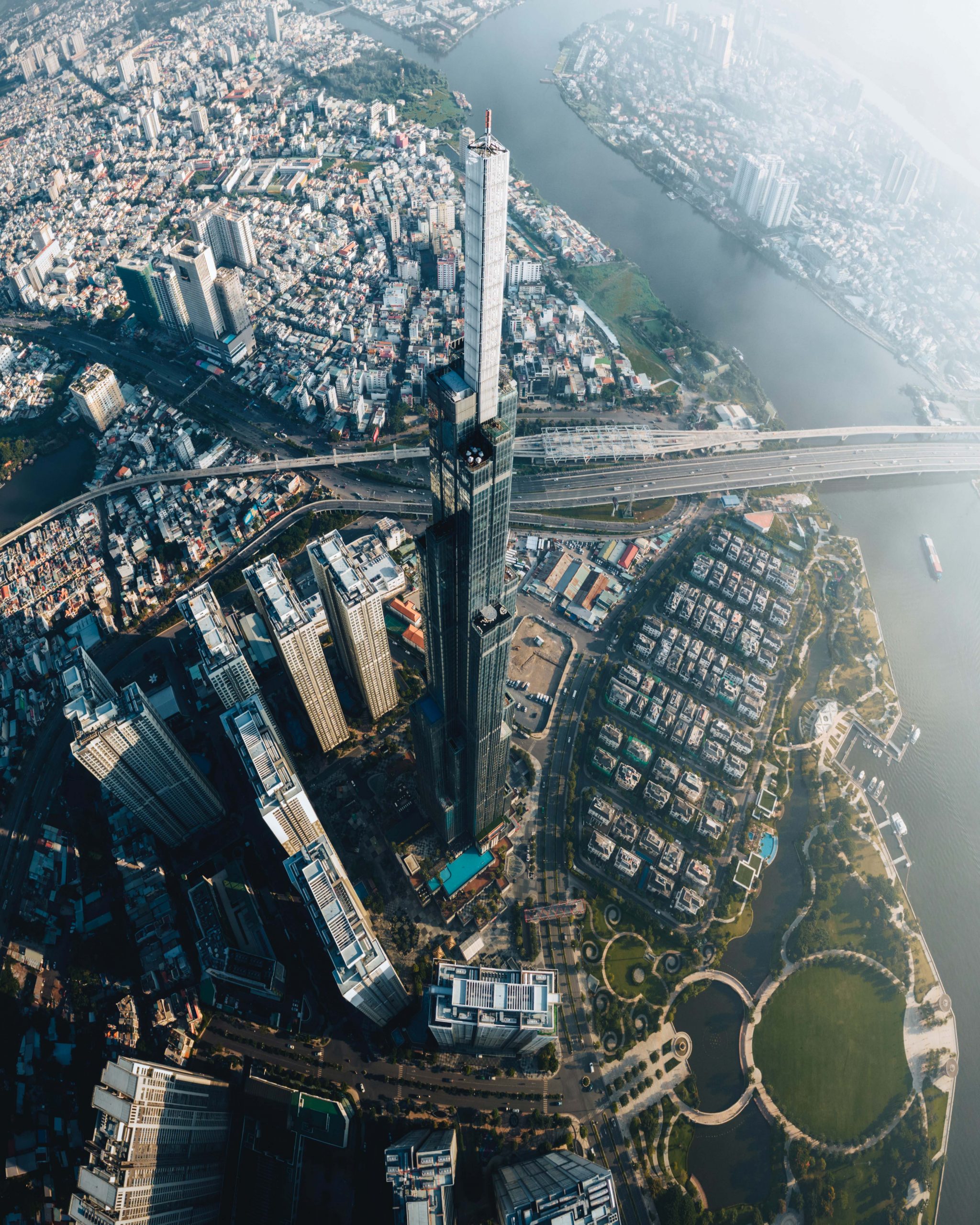The concept of “Environmental Permit” appeared with the introduction of the Law on Environmental Protection 2020 (“LOEP 2020“). An Environmental Permit is a document that integrates many contents related to the environment in a variety of aspects such as regulations on hazardous waste treatment, discharge of wastewater into water sources, exhaust gas discharge methods, noise and vibration limits, etc. Environmental Permits replace a series of Environmental Permits under the Law on Environmental Protection 2014 such as Certificates of completion of environmental protection works, Hazardous waste treatment licenses, Permits to discharge wastewater into water sources, etc. This article summarizes some notable contents related to the Environmental Permit under LOEP 2020.
1. Concept and content of Environmental Permit
Pursuant to Article 3.8 of LOEP 2020, Environmental Permit is a document issued by a competent authority to organizations and individuals engaged in production, business and service activities that are permitted to discharge waste into the environment, manage waste, import scrap from abroad as production materials along with several requirements and conditions on environmental protection as prescribed by law.
The contents of the Environmental Permit include: (1)
- The first content – General information about investment projects, establishments, concentrated zones of production, business, and services, and industrial clusters such as: name of the project owner, operation location, enterprise registration information, tax identification number, type of production/business/service, scope, scale, and capacity of the project.
- The second content – Contents of environmental licensing, including:
-
- Source of wastewater; maximum wastewater discharge flow; wastewater flow; pollutants and limit values of pollutants by wastewater stream; location and method of wastewater discharge and source of wastewater reception;
-
- Sources of emissions; maximum exhaust gas discharge flow; exhaust gas flow; pollutants and limit values of pollutants by exhaust gas stream; location and method of exhaust gas discharge;
-
- Sources of generation and limit values for noise and vibration;
-
- Works and systems of hazardous waste treatment equipment; hazardous waste codes and volumes permitted for treatment, number of hazardous waste transshipment stations, areas of operation for investment projects, establishments providing hazardous waste treatment services;
-
- Types and volumes of scrap allowed to be imported for investment projects and establishments that import scrap from abroad as production materials.
- The third content – Requirements for environmental protection, including:
-
- Having constructions and measures to collect and treat wastewater and exhaust gas, reduce noise and vibration that meet the prescribed requirements; in case of discharging wastewater into irrigation works, there must be environmental protection requirements for water sources of irrigation works;
-
- Having measures, systems, constructions and equipment for storage, transportation, transshipment, preliminary processing and treatment that meet the prescribed requirements of technical processes and management for investment projects and establishments providing hazardous waste treatment services;
-
- Having warehouses and yards for scrap storage that meet prescribed requirements; recycling equipment system; plans for treatment of impurities; re-export plans for investment projects and establishments that import scrap from abroad as production materials;
-
- Having plans for environmental management and supervision, plans for prevention and response to environmental incidents; equipment and constructions for prevention and response to environmental incidents and environmental monitoring;
-
- Management of domestic solid waste, ordinary industrial solid waste, and hazardous waste; environmental renovation and restoration; compensation for biodiversity in accordance with law;
-
- Other requirements for environmental protection (if any).
- Fourth content – Duration of the Environmental Permit: Depending on the subject of the Environmental Permit, the term of the Environmental Permit may be 07 years, 10 years or another shorter term at the request of the owner of the investment project, establishment, investor in construction and business of infrastructure of the concentrated zones of production, business and service, industrial clusters.
- Other contents (if any).
2. Projects required to obtain an Environmental Permit
Pursuant to Article 39 of LOEP 2020, the projects that must obtain an Environmental Permit include:
The first group: Investment projects of group I, group II, and group III4 that generate wastewater, dust, and exhaust gas discharged into the environment must be treated or generate hazardous waste must be managed in accordance with regulations on waste management when they are put into official operation, except for projects that are exempt from Environmental Permits according to Article 39.3 of the LOEP 2020, Article 109.1.b of the Law on Geology and Minerals 2024.
The classification of investment projects is determined according to environmental criteria as follows: (i) Scale, capacity, type of production, business, and services; (ii) Land use area, land with water surface, sea area; scale of exploitation of natural resources; (iii) Environmentally sensitive factors as prescribed in Article 28.1.c of the LOEP 2020.
The second group: Investment projects, establishments, concentrated zones of production, business, and services, and industrial clusters that were put into operation before 1 January 2022 and have the same environmental criteria as the first group above.
3. Competent licensing authorities for issuing Environmental Permits
Pursuant to Article 41 of LOEP 2020, the competent licensing authorities vary depending on each entity, including the Ministry of Natural Resources and Environment, the Ministry of National Defense, the Ministry of Public Security, the Provincial People’s Committee, or the District People’s Committee.
- The Ministry of National Defense and the Ministry of Public Security issue Environmental Permits for: investment projects and facilities classified as state secrets concerning national defense and security;
- The Ministry of Natural Resources and Environment issues Environmental Permits for the following entities (except for those under the licensing authority of the Ministry of National Defense or the Ministry of Public Security):
-
- Entities: (i) specified under Article 39 of LOEP 2020, and (ii) whose environmental impact assessment reports have been approved by the Ministry of Natural Resources and Environment;
-
- Entities: (i) specified under Article 39 of LOEP 2020, and (ii) located in areas covering two or more provincial-level administrative units or marine areas where the administrative management responsibility of the Provincial People’s Committee has not been determined;
-
- Entities: (i) specified under Article 39 of LOEP 2020, and (ii) facilities importing scrap materials from foreign countries for production purposes;
-
- Entities: (i) specified under Article 39 of LOEP 2020, and (ii) facilities providing hazardous waste treatment services.
- The Provincial People’s Committee issues Environmental Permits for the following entities (except for those under the licensing authority of the Ministry of National Defense, the Ministry of Public Security, or the Ministry of Natural Resources and Environment):
-
- Group II investment projects as prescribed under Article 39 of LOEP 2020;
-
- Investment projects: (i) classified as Group III under Article 39 of LOEP 2020, and (ii) located in areas covering two or more district-level administrative units;
-
- Entities: (i) prescribed under Article 39.2 of LOEP 2020, and (ii) whose environmental impact assessment reports have been approved by the Provincial People’s Committee or a Ministry or Ministerial-level agency.
- The District People’s Committee issues Environmental Permits to entities prescribed under Article 39 of LOEP 2020, except those under the licensing authority of the aforementioned authorities.
4. Application dossier, legal basis, and procedures for issuance of Environmental Permits
4.1 Application dossier for Environmental Permit shall include the following (3):
- An Application Letter for an Environmental Permit: prepared in accordance with the template provided in Appendix XIII of Decree No. 08/2022/ND-CP, as amended by Decree No. 05/2025/ND-CP (“Decree 08/2022”);
- An Environmental Permit Proposal Report: The content of the report shall vary depending on each entity applying for the permit and shall comply with the provisions of Article 28 of Decree 08/2022;
- Other legal and technical documents related to the investment project, facility, industrial production complex, business complex, service complex, or industrial cluster, specifically (4):
-
- For investment projects and expansion projects of existing facilities not subject to environmental impact assessment: A certified copy of the feasibility study report or an equivalent document, in accordance with laws on investment, public investment, public-private partnership investment, and construction.
-
- For investment projects and facilities subject to environmental impact assessment: The project owner or facility shall not be required to submit additional legal and technical documents in the application dossier.
4.2 Basis for issuing an Environmental Permit (5):
- A complete and valid application dossier as stipulated in Section 2.1 above;
- An Environmental Impact Assessment Report, approved by the competent authorities (if any);
- The national environmental protection planning, provincial planning, environmental zoning, and environmental carrying capacity as determined by the competent authorities, except in cases at the time of issuance of the Environmental Permit, such national environmental protection planning, provincial planning, environmental zoning, or environmental carrying capacity has not yet been promulgated by the competent authorities;
- Environmental technical standards and regulations;
- Relevant laws and regulations concerning environmental protection, water resources, and other applicable legal provisions.
4.3 Procedures for issuance of an Environmental Permit: The issuance of an Environmental Permit shall be carried out in compliance with the provisions of Article 29 of Decree 08/2022.
4.4 Outcome: If the entire application dossier is complete and valid, and upon favorable assessment results, the competent authorities shall issue an Environmental Permit to the applicant in accordance with Form No. 40, Appendix II, as promulgated under Circular No. 02/2022/TT-BTNMT.
(1) Article 40.1 of the Law on Environmental Protection 2020
(2) According to the detailed provisions of Article 28 of the Law on Environmental Protection 2020
(3) Article 43.1 of LOEP 2020, Article 28 and Article 29 of Decree No. 08/2022/ND-CP
(4) Article 29.1 of Decree No. 08/2022/ND-CP
(5) Article 42.1 of LOEP 2020
See more:
1/ Legal regulations about environmentally friendly products and services
2/ Which investment projects must be granted an environmental license and environmental registration?
Disclaimers:
This article is for general information purposes only and is not intended to provide any legal advice for any particular case. The legal provisions referenced in the content are in effect at the time of publication but may have expired at the time you read the content. We therefore advise that you always consult a professional consultant before applying any content.
For issues related to the content or intellectual property rights of the article, please email cs@apolatlegal.vn.
Apolat Legal is a law firm in Vietnam with experience and capacity to provide consulting services related to Business and Investment and contact our team of lawyers in Vietnam via email info@apolatlegal.com.





































